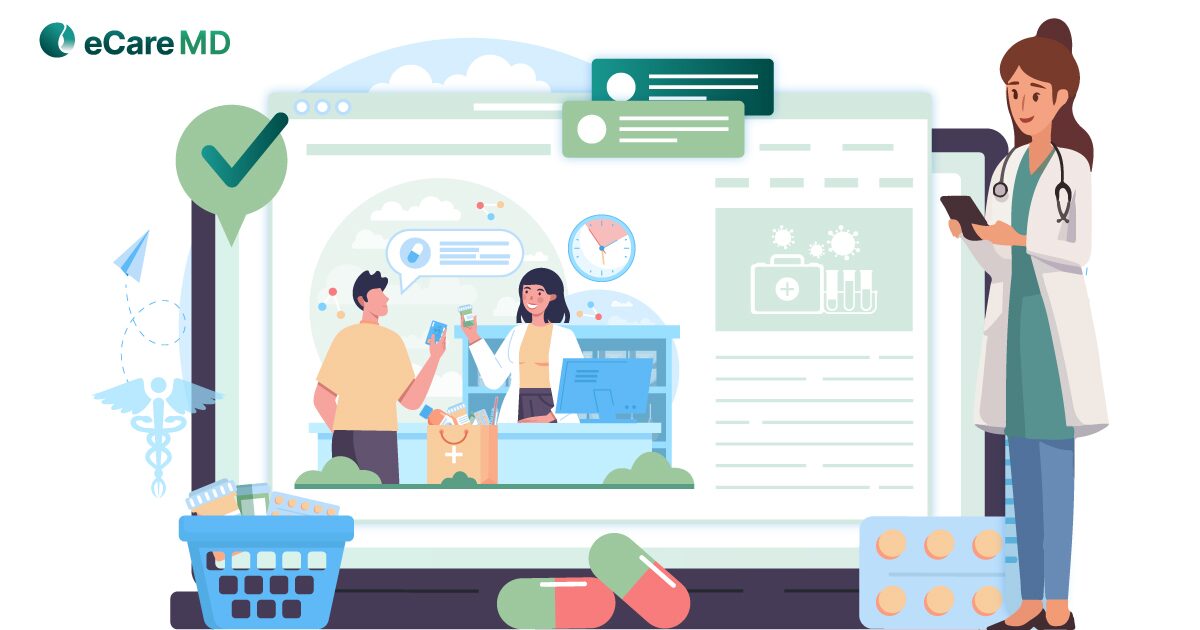One of the major burdens that clinicians and other healthcare professionals face right now is administrative work, including tedious documentation and billing processes. A survey by Google Cloud last year found that, on average, clinicians spend 28 hours on administrative tasks per week, and medical staff spend 34 hours.
However, for small practices where multitasking is the norm, this burden can quickly become unsustainable. Additionally, when these clinics are providing Chronic Care Management (CCM) services, administration becomes a nightmare for them.
With only one to two staff members handling 50-200+ CCM patients, the sheer number of tasks across disconnected EHRs and spreadsheets leads to errors, burnout, and revenue leakage.
But, do you know what is at the core of this?
Fragmented systems and manual processes that slow down teams and divert time are the answer. But there is a solution that can sort this tangled mess: unified CCM workflows. This solution integrates task management, time tracking, care planning, and billing into one Chronic Care Management platform, tremendously speeding up operations.
This blog explores how such integrated CCM software can boost efficiency and lighten the load while improving small clinic chronic care management without drowning in administrative chaos.
So, let’s dive in!
The Administrative Burden Crisis in Small Clinic CCM Program
When a small clinic runs a Chronic Care Management (CCM) program, it isn’t just about the patient care. They need to jump between systems, paperwork, and manage everything with a stretched-thin staff. This is why, without streamlined processes and unified CCM software, these clinics find themselves in a maze of inefficiencies impacting both care quality and profitability.
Let’s take a look at how:
- Fragmented Systems & Multiple Platform Management: Most small clinics rely on a fragmented network of EHRs, billing tools, scheduling apps, and communication platforms. And this is where the most time wastage happens, as they need to switch between systems most of the time, leading to data duplication and critical documentation errors.
- Manual Process & Paper-Based Documentation: Clinicians often create care plans, track time logs, and prepare billing data manually. But with outdated workflows and a lack of integration, staff frequently fall back on spreadsheets and paper-based forms, hindering productivity.
- Staff Overwhelm & Limited Resources: Small clinics are understaffed, and one or two care managers manage 50 to 200+ patients. Without proper integrated care management software, clinical staff are busy covering paperwork along with patient care, leading to increased stress and burnout.
- Revenue Impact of Inefficient Workflows: When you bill for CCM services, incomplete documentation and missed time tracking often lead to underbilling and claim denials. These inefficiencies slow down revenue cycles and limit the clinic’s ability to enroll more patients or expand CCM services profitably.
The Power of Unified CCM Workflow for Small Practices
For small clinics, the fragmented systems and manual processes are nightmares that they have to face daily. However, unified CCM workflows in CCM software can transform this by integrating systems, automating routine workflows, and streamlining communication and compliance. Here’s how these unified healthcare workflows unlock efficiency for small clinics:
- Single-Platform Integration & Data Consolidation: A unified small clinic CCM software brings all functions, including patient management, billing, documenting, and reporting, under a single platform. This eliminates the need to switch between systems and consolidates all data in one place, effectively reducing duplicate entries and data entry errors.
- Automated Workflow Triggers & Task Management: Clinicians in small clinics generate and update care plans manually, increasing workload and chances of errors due to stress and human error. But with clinical workflow automation, care plans are generated and updated as patient status changes and new reports are added. Integrated task management also makes it easy for small care teams to assign and monitor tasks to involved members, while smart scheduling reduces the back-and-forth of manual scheduling.
- Streamlined Communication & Care Coordination: With unified CCM platforms, you get built-in patient communication tools and provider messaging, making coordination with patients and providers much faster. Additionally, automated patient outreach and follow-up keep patients engaged without you having to get personally involved.
- Simplified Billing & Compliance Management: One major hurdle of billing and compliance maintenance is efficiently solved by a unified CCM platform. With automated time tracking and built-in CMS compliance check, ensuring the claim meets all thresholds is ensured even before it is sent, reducing the risk of claim denials and penalties.
In short, when you implement small clinic CCM software that unifies CCM workflows, you get more accurate and quicker results in billing, documentation, and patient coordination.
Key Unified Workflow Components for Maximum Efficiency
To truly reduce the administrative burden for healthcare providers, unified healthcare workflows need to have some essential features integrated into them. These components are what help maximize efficiency in unified CCM workflows, so we have created a table that explains these components easily:
| Component | Key Features | Benefits for Small Clinics |
| Patient Identification & Enrollment | – Auto-screening for CCM eligibility
– One-click consent & enrollment – Bulk patient onboarding |
Saves staff time and enables faster scaling of CCM programs |
| Care Plan Management | – Pre-built templates
– Auto-updates from EHR – Easy physician approvals |
Reduces documentation time and improves care team collaboration |
| Time Tracking & Billing Automation | – Auto-capture of billable activities
– Integrated CPT workflows – Real-time billing dashboard |
Increases billing accuracy and ensures timely reimbursements |
| Reporting & Analytics | – Performance metrics tracking
– CMS compliance reports – Workflow optimization insights |
Supports audit-readiness and identifies opportunities for process improvement |
When you add these components, you can get the full benefits of using CCM software with unified workflows. So, when you are looking for CCM software for your clinic, ensure that it provides automated patient management, care plan management, time tracking, and reporting analysis.
Implementing Strategy for Small Clinic Success
Implementing a chronic care management (CCM) platform in a small clinic can seem overwhelming with limited resources and a tight budget. However, it doesn’t have to be as with proper strategy and the right approach, it can be easy and without any hiccups or pitfalls in between. That’s why we have created a dos and don’ts for you to create the best implementation suitable for your clinic:
| Do’s | Don’ts |
| Start with a manageable group of core CCM patients | Don’t implement the entire platform all at once |
| Customize workflows based on team roles | Don’t skip the parallel system phase during the transition |
| Conduct short, role-based staff training sessions | Don’t overload staff with long, generic training modules |
| Gather regular staff feedback and adapt workflows accordingly | Don’t ignore feedback or concerns from team members |
| Highlight early wins to build team confidence and momentum | Don’t overlook the importance of long-term scalability |
If you follow this, you can easily deploy your CCM software and avoid common pitfalls that trouble many large and small practices. Start with phased implementation instead of full implementation, and you will have your system working seamlessly without giving surprises.
Selecting the Right Unified CCM Platform for Small Clinics
Choosing the right CCM automation software is important for small clinics to streamline workflows and reduce administrative burden for the staff. First of all, the CCM software should be an all-in-one solution that works as a single system, eliminating the need to switch between systems.
Make sure that the patient care management software comes with intuitive interfaces that simplify features and do not make it complicated for patients as well as physicians. The next thing to verify is integration capabilities, as software to work at its best needs to be seamlessly integrated with existing systems.
Cloud-based platforms are best suited for this and require minimal IT resources, reducing the heavy initial investment. Check if the software gives mobile access, as it gives the physicians flexibility to manage CCM tasks anytime and anywhere.
Support is also essential for the software to work smoothly and efficiently. Small clinics do not have in-house IT teams; this is why vendor support is indispensable. So, choose a vendor that understands small-practice challenges and offers tailored training, quick responses, and real-time troubleshooting when you need it most.
Finally, find a development partner that has transparent pricing and flexible payment options. Also, ask for free trials before subscribing or buying the platform to verify that it works well with your system. Analyze the ROI to see how quickly you can recover the investment and start earning profit through improved billing accuracy, reduced admin time, and increased patient enrollments.
Conclusion
Small practices are troubled with inefficient workflows and a mountain of administrative tasks, with an insufficient workforce to manage both paperwork and patient care. This is where CCM software with unified CCM workflows plays a critical role by automating routine workflows and freeing clinicians to focus on patient care.
Unified workflows also enable small practices to scale CCM programs and expand them sustainably without increasing the workload. So, if you are a small clinic, then use unified healthcare workflows with small clinic CCM software for boosting your productivity. Click here to contact our team to learn how it will benefit you.
Frequently Asked Questions
- How much administrative time can small clinics typically save with unified CCM workflows?
Small clinics can significantly reduce administrative burden with unified Chronic Care Management (CCM) workflows. While exact figures vary, some solutions report helping practices save 30 minutes per day on tasks like tagging and streamlining processes from seven screens to one click, leading to more efficient claim submission and overall practice efficiency.
- What’s the minimum patient volume needed to justify unified CCM software for small practices?
A precise minimum patient volume isn’t universally defined, but unified CCM software becomes highly justifiable when a small practice manages a significant number of patients with two or more chronic conditions. This enables efficient billing (e.g., ~$42/patient/month for CPT 99490), improved care coordination, and reduced administrative burden, making it cost-effective for even moderate volumes.
- How do unified workflows integrate with existing EHR systems in small clinics?
Unified workflows integrate with existing EHR systems in small clinics primarily through interoperability. This involves using standards like HL7 and FHIR, APIs, and sometimes integration engines or middleware to enable seamless data exchange. The goal is to consolidate patient information, streamline administrative tasks (like scheduling and billing), and enhance communication, ultimately improving patient care and clinic efficiency.
- What’s the typical implementation timeline for unified CCM workflows in small practices?
For small practices, implementing unified Chronic Care Management (CCM) workflows typically takes 3-7 months. This includes planning, patient identification and enrollment, staff training, system configuration (often integrating with existing EHRs), and establishing billing processes. Initial phases like planning and data migration are usually the most time-intensive.
- How do unified CCM platforms scale pricing for small clinic budgets?
Unified CCM platforms typically scale pricing for small clinics using per-patient or tiered subscription models. This allows clinics to pay based on their current patient volume, ensuring costs align with their budget and grow only as their practice does, avoiding large upfront investments.
- What staff training is required to transition to unified CCM workflows?
Transitioning to unified CCM workflows requires staff training on the new platform’s features, functionalities, and integrations. This includes mastering omnichannel communication tools, data management, personalized content creation, and compliance protocols. Training should also cover new processes for streamlined customer interaction and problem resolution.





























